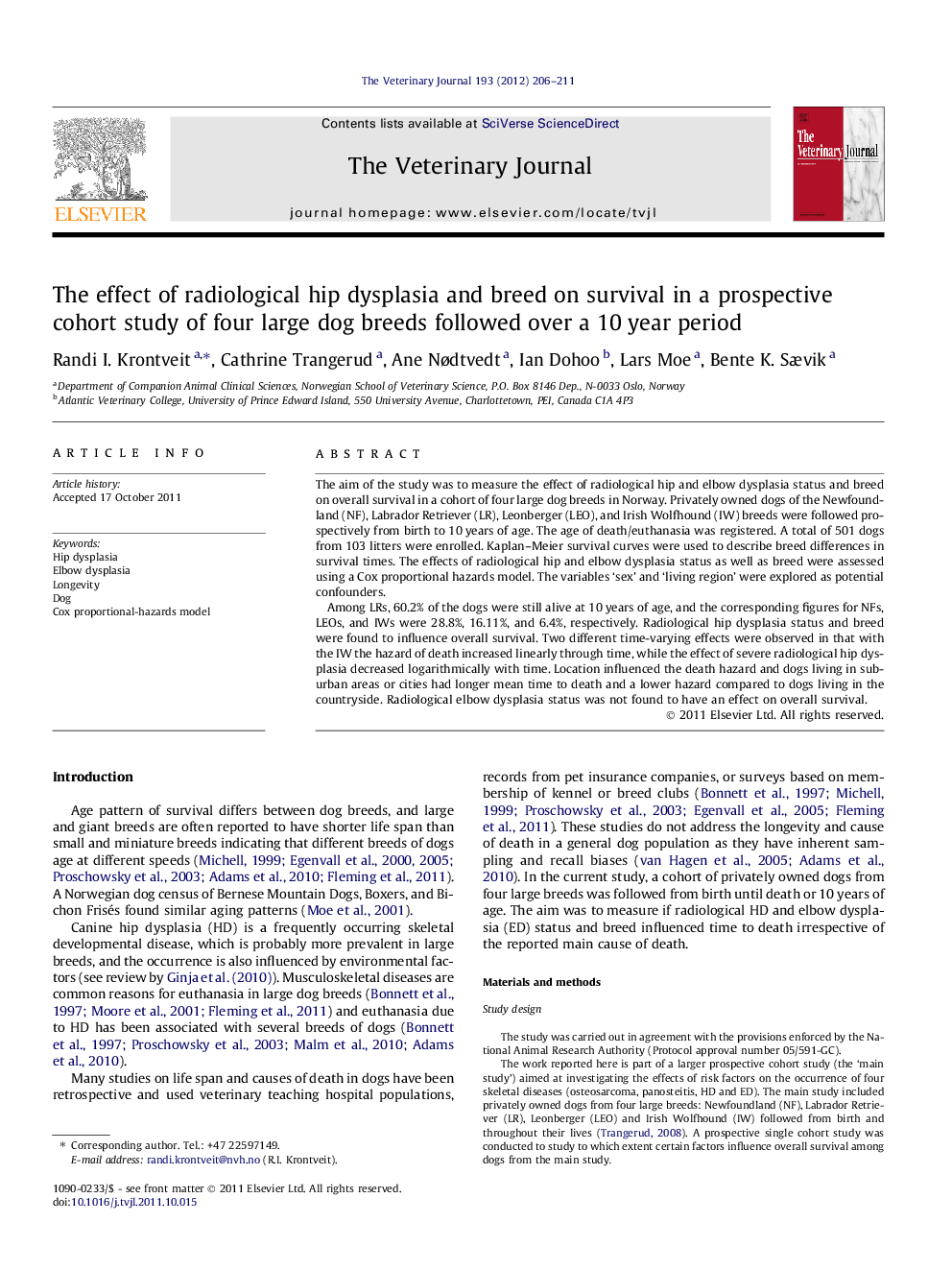| Article ID | Journal | Published Year | Pages | File Type |
|---|---|---|---|---|
| 5798921 | The Veterinary Journal | 2012 | 6 Pages |
The aim of the study was to measure the effect of radiological hip and elbow dysplasia status and breed on overall survival in a cohort of four large dog breeds in Norway. Privately owned dogs of the Newfoundland (NF), Labrador Retriever (LR), Leonberger (LEO), and Irish Wolfhound (IW) breeds were followed prospectively from birth to 10Â years of age. The age of death/euthanasia was registered. A total of 501 dogs from 103 litters were enrolled. Kaplan-Meier survival curves were used to describe breed differences in survival times. The effects of radiological hip and elbow dysplasia status as well as breed were assessed using a Cox proportional hazards model. The variables 'sex' and 'living region' were explored as potential confounders.Among LRs, 60.2% of the dogs were still alive at 10Â years of age, and the corresponding figures for NFs, LEOs, and IWs were 28.8%, 16.11%, and 6.4%, respectively. Radiological hip dysplasia status and breed were found to influence overall survival. Two different time-varying effects were observed in that with the IW the hazard of death increased linearly through time, while the effect of severe radiological hip dysplasia decreased logarithmically with time. Location influenced the death hazard and dogs living in suburban areas or cities had longer mean time to death and a lower hazard compared to dogs living in the countryside. Radiological elbow dysplasia status was not found to have an effect on overall survival.
